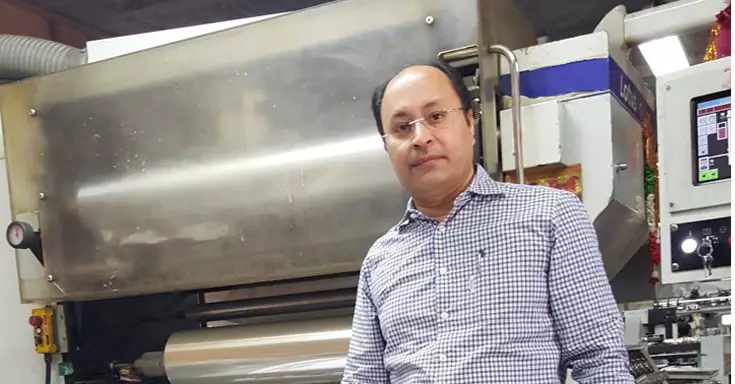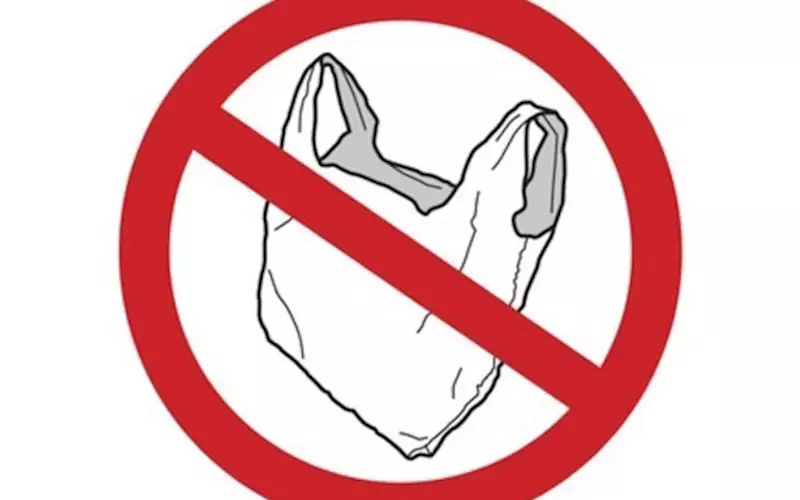What’s the alternative to plastic?
In the wake of the ban of single-use plastic in Maharashtra, PrintWeek India asks printers to suggest alternatives to the plastic products used in a print firm
11 Jul 2018 | By Rahul Kumar
Vikas Ghai, Sterling Publishers

What is the alternative to lamination of book covers? UV? Aqueous varnish? Others?
If you want a longer life for the cover, there is no substitute to lamination. UV gives an extra sheen and somewhat increases the life of the cover, but has its own issues which could be far more dangerous, Aqueous varnish only gives a sheen to printing.
What according to you would be a suitable replacement to shrink-wrap films?
Paper-wrapping. However, currently, it’s a time-consuming and labour intensive process.
Which according to you are the de-linking and plastic collection centres in India?
I am aware of the hazardous waste collection centres but not aware of the de-linking and plastic collection centres in India
MN Pandey, Avantika Printers

Which according to you are the de-linking and plastic collection centres in India?
Flood UV.
What according to you would be a suitable replacement to shrink-wrap films?
Vax coated packing paper or 50-micron plastic shrink wrap.
Which according to you are the de-linking and plastic collection centres in India?
No idea.
Manu Choudhury, CDC Printers

What is the alternative to lamination of book covers? UV? Aqueous varnish? Others?
UV can give the desired result in terms of appearance, but when it comes to protection from damage due to tearing, UV will not protect the book.
What according to you would be a suitable replacement to shrink-wrap films?
I really don't know.
Which according to you are the de-linking and plastic collection centres in India?
I wouldn't know.
Apurv Garg, Brijbasi Art Press

What is the alternative to lamination of book covers? UV? Aqueous varnish? Others?
We, as a company, have been using mostly UV coating for softcover books. We have worked with UV companies and some in-house R&D to ensure there is no cracking on covers or crease marks. Only hardcover books have lamination but this is just 5% of the total book's production.
What according to you would be a suitable replacement to shrink-wrap films?
Bio-degradable or films made from eco-friendly materials are used commonly for exports.
Which according to you are the de-linking and plastic collection centres in India?
It took 20 years in Europe and other countries for the whole process to get perfect, with stringent controls. We haven’t even started here.
Kamal Chopra, Foil Printers

What is the alternative to lamination of book covers? UV? Aqueous varnish? Others?
In my opinion, UV again is bad for health. Therefore, Aqueous may be the best alternative. Different types of varnishes offer a more economical alternative to laminate, or as a compliment to it. Varnishes increase the strength and durability of the printed product, while also adding an aesthetic sheen. Therefore, the only alternative to lamination may be varnish.
What according to you would be a suitable replacement to shrink-wrap films?
Shrink wrapping is generally done to ship the printed material to protect these from dust and moisture. With the ban on the use of plastic films, the only alternative comes to my mind is the wrap the printed material with paper, in the past, we have been using ‘ream wrappers’ for the purpose.
Which according to you are the de-linking and plastic collection centres in India?
Dehradun-based Indian Institute of Petroleum (IIP) developed a unique process of converting plastic waste like polyethylene and polypropylene, both together accounting for 60% of plastic waste, to either gasoline or diesel. The technology is capable of converting 1 kg of plastic to 750ml of automotive grade gasoline. Due to nearly no presence of Sulphur in the produced fuel, IIP’s plastic converted to fuel is pure and meets the Euro-III standards. IIP also stated that a vehicle using this fuel would be able to run for at least two kilometres more per litre. Countries like Japan, Germany and the United States have already implemented the plastic to fuel conversion process with much success.
The government of Maharashtra has introduced black and gold portable bins. If you have any plastic items such as polypropylene bags, plastic sheets, plastic pouches and plastic and thermocol cutlery, you can dump them in black and gold portable bins. After the state-wide plastic ban, the BMC has set up 25 collection centres across the city.
A Balachandra, Rajhans Enterprises
What is the alternative to lamination of book covers? UV? Aqueous varnish? Others?
I think UV and laminate and aqueous are fine as they use not more than two microns.
Ashwini Singh of Samrat Offset
What according to you would be a suitable replacement to shrink-wrap films?
We have been using kraft paper as an alternative to shrink-wrapping.
Rajan Agarwal, MBD Group

What is the alternative to lamination of book covers? UV? Aqueous varnish? Others?
UV and aqueous varnish both are the alternatives. Both can be used according to market's demand for value addition. However, aqueous varnish does not offer the same level of protection as lamination film.
What according to you would be a suitable replacement to shrink-wrap films?
Wax quoted paper was used before plastic. Similar eco-friendly and technically enhanced solutions can be found. Kraft Paper is an alternative, but this is not transparent and the packing needs to be opened every time we need to check which books are available in the pack.
Which according to you are the de-linking and plastic collection centres in India?
Plastic collection in India is still largely unorganised, although India has very good plastic recycling industry. The collection begins with waste pickers, who collect waste from households, or other dump yards. This collected recyclable waste goes to scrap dealers (who are primary aggregators), who in turn sell larger quantities of waste to secondary aggregators. These secondary aggregators later sell to recyclers or to tertiary aggregators. From the recyclers, the material reaches manufacturing/ recycling units.











 See All
See All